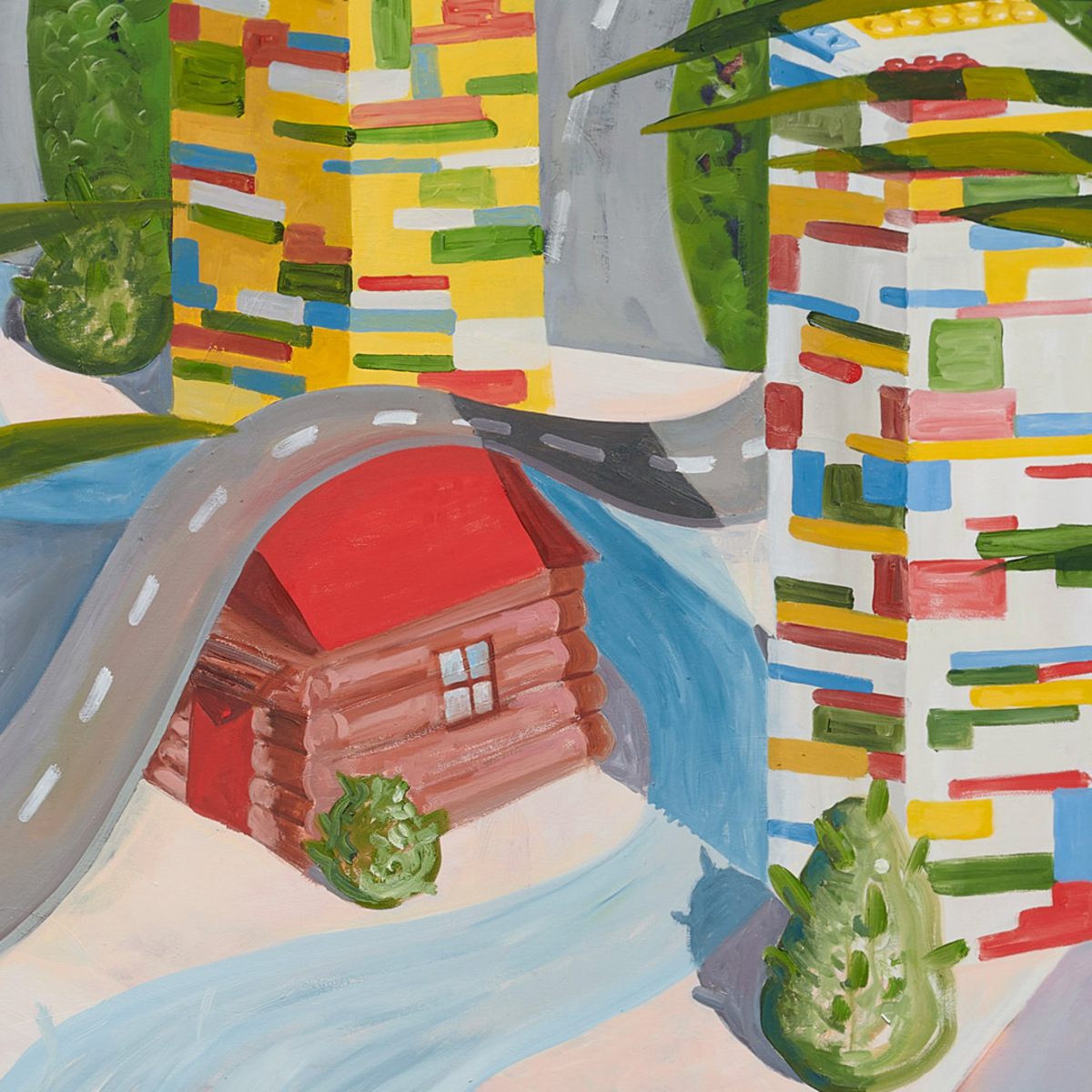REAL ESTATE RELIGION
Sophie Gannon Gallery
27 Sep 2022 – 15 Oct 2022

THE IMPOSSIBLE ART OF CONTAINMENT: Paintings by Amber Boardman
By Lauren K. Watel
To enter the world of Amber Boardman’s “Real Estate Religion” is to encounter, in thirteen vibrant and dynamic paintings, the fundamental human impulse to create order out of chaos, as well as the inevitable failure of these efforts. The show’s title painting illustrates most overtly the motifs and formal elements that inform the work as a whole. Boardman creates a hybrid interior whose lower half resembles a kitchen, with all the appropriate appliances and accoutrements, while the canvas’s center and upper half are dominated by the outsized Gothic pointed-arch window and soaring vaulted ceilings of a cathedral. Intense light pouring in from the window evokes holiness as depicted in traditional religious paintings, though in this case the rays of light usually haloing a saint instead emanate from the sink’s curved faucet. Combining the aesthetics of a 17th-century Dutch painter like Pieter Saenredam and an upscale Airbnb photo, the image caricatures the capitalist worship of private ownership, in which the acquisition of property-as-sanctuary is the divine right of a privileged minority who can afford it.
Within Boardman’s artistic vision, real estate religion references not only a reverence for property but also, more generally, a devotion to proprietary space or capacity. The title painting showcases a variety of surfaces, vessels and furnishings meant for the organization and display of objects, elements and spaces. Boardman here taps into the all-too-human impulse to control and contain an everchanging, disorderly environment by any means necessary. The countertops, cabinetry, shelving, open refrigerator and kitchen island of Real Estate Religion serve as holders for the many objects involved in food preparation, all of which glow in the kitchen’s heavenly light. A single place setting and glass of wine, two eggs frying in a pan, and a cutting board with two pieces of bread sliced from a loaf point to an absent organizer, who will soon be consuming the sacred meal-for-one being prepared. The large cathedral-style window emphasizes the room’s spiritual symbolism as organizing space, since its panes are dark, as if it’s night outside, or as if there is no outside at all. The dramatic light, therefore, seems to come not through the window but from the window, as if the room itself were its source. Since architecture evolved to offer a haven against the wildness of nature, Boardman’s kitchen depicts a human-made Eden, in which the garden itself is banished, a pair of small ceramic planters under the window and the leaves of a potted plant behind the refrigerator door the only evidence of the natural world outside.
At the same time that the painting reifies the compulsion to organize and contain, it also depicts the fruitlessness of those attempts at containment. The overall composition is rife with spatial anomalies, disjunctures, leakages and spillages. On closer inspection, the orderly assemblage of objects begins to fall apart, the items contained forever rebelling against the restraints meant to hold them. Melting wax spills over candlesticks, water drips from the haloed faucet and overflows the sink, the amorphous contents of the refrigerator seem to drip and smear, egg white overruns the side of the pan, which itself appears to be dissolving. A swathe of reddish fabric oozes out from under a candlestick and over the side of the microwave, which functions as the kitchen’s “altar.” The luminous white countertops slope toward the bottom of the frame; consequently, the objects rest uneasily on their surfaces, as though they could slide off at any moment. The light-colored top of the kitchen island also acts as a canvas within the canvas, on which the artist can explore painting itself as a medium. Juxtaposed with impressionistically painted-in stovetop heating elements, the sliced bread and glass of wine blend cartoony rendering with the detail and shadowing of a Renaissance still life.
Just as in Real Estate Religion, all the paintings in the show, one way or another, portray endeavors at containment and their futility. Boardman obsessively fills her canvases with tabletops, dishes and pitchers and jugs, shelving, and all manner of organizational receptacles. She organizes her interiors and even her exteriors with features of spatial demarcation: wainscotting, floorboards, windows, doors, fences, walls, pools, stairs and ladders. At the same time, whatever elements are meant to be confined by these assorted forms of restraint invariably seem to be rioting against their confinement, dripping, melting, overflowing, sliding off, floating, or distorting into abstraction. Stairs and ladders lead nowhere or disintegrate. In paintings like Sun-Drenched Real Estate Dictionary, Apartment Therapy, In-Law Dinner Alfresco and Gift Table Altar objects in brightly hued clusters sit precariously on tabletops, blend into the background, defy perspective and gravity, and blur into amorphous shapes. Water escapes from the pools meant to contain it in Knock Down Rebuild and Million Dollar View, the latter with its fleshy, sunset hues invoking a hubristic fantasy of walling off the ocean. Reckless Vessels shows paint rising up as if animated, spilling, pouring and splashing out of its containers, even toppling them off their shelves.
Four smaller paintings zero in on specific organizing systems: File Cabinet, Bag of Bags, Junk Drawer and Storage Unit. Each assortment of objects is bordered by or hovers over subtle frame-like elements, as if the act of organizing were akin to creating a painting. Indeed, one might say that these images implicitly compare the endlessly futile efforts to organize the chaos of human existence with the perennially imperfect attempts of the artist to capture reality in paint. Defying linear perspective, the items meant for organization seem to float on the surface of the canvas, rather than “inside” the drawer or bag or closet. Objects are rendered in brushwork so painterly that they veer from loose representation into abstraction—file folders as stripes and squiggles on a bright orange background; a plastic bag filled with bags as ghostly, jellyfish-like blob floating in moss-green and brown space; junk in a drawer as sketchy linework, smears and smudges, and colorful forms suggestive of household implements; a storage unit as compositional study of contrasting geometries, patterned verticals and horizontals, and primary colors with varied texturings and shadings.
Boardman’s universe of vigorous organizing and riotous objects leaves little room for the natural world. Interiors have either no windows, opaque windows or, in the case of Sun-Drenched Real Estate Dictionary, orange-hued windows, through which one can see only the vague outlines of other houses. Cut flowers in a vase and potted plants constitute the few traces of life indoors, whereas in the exteriors one gets glimpses of greenery bordered by fences and walls. With the exception of two tiny insect-like swimmers in Million Dollar View, humans are entirely absent. God’s Printer, the show’s single landscape featuring undomesticated greenery, imagines God as the divine organizer, with His latter-day organizational tool, a giant printer, spitting out the images that will form heaven and earth.
In this postmodern take on the biblical creation story, Boardman likens the act of divine creation to the work of the painter, whose very practice involves organizing reality onto the real estate of the canvas with nothing more than paint and a brush. Along with the show’s other paintings, this work both playfully and forcefully reminds us of the glorious folly of all our organizational endeavors against the larger tumultuous forces—of global capitalism, class and racial inequities, climate change, rising authoritarianism and the simple but elemental passage of time.
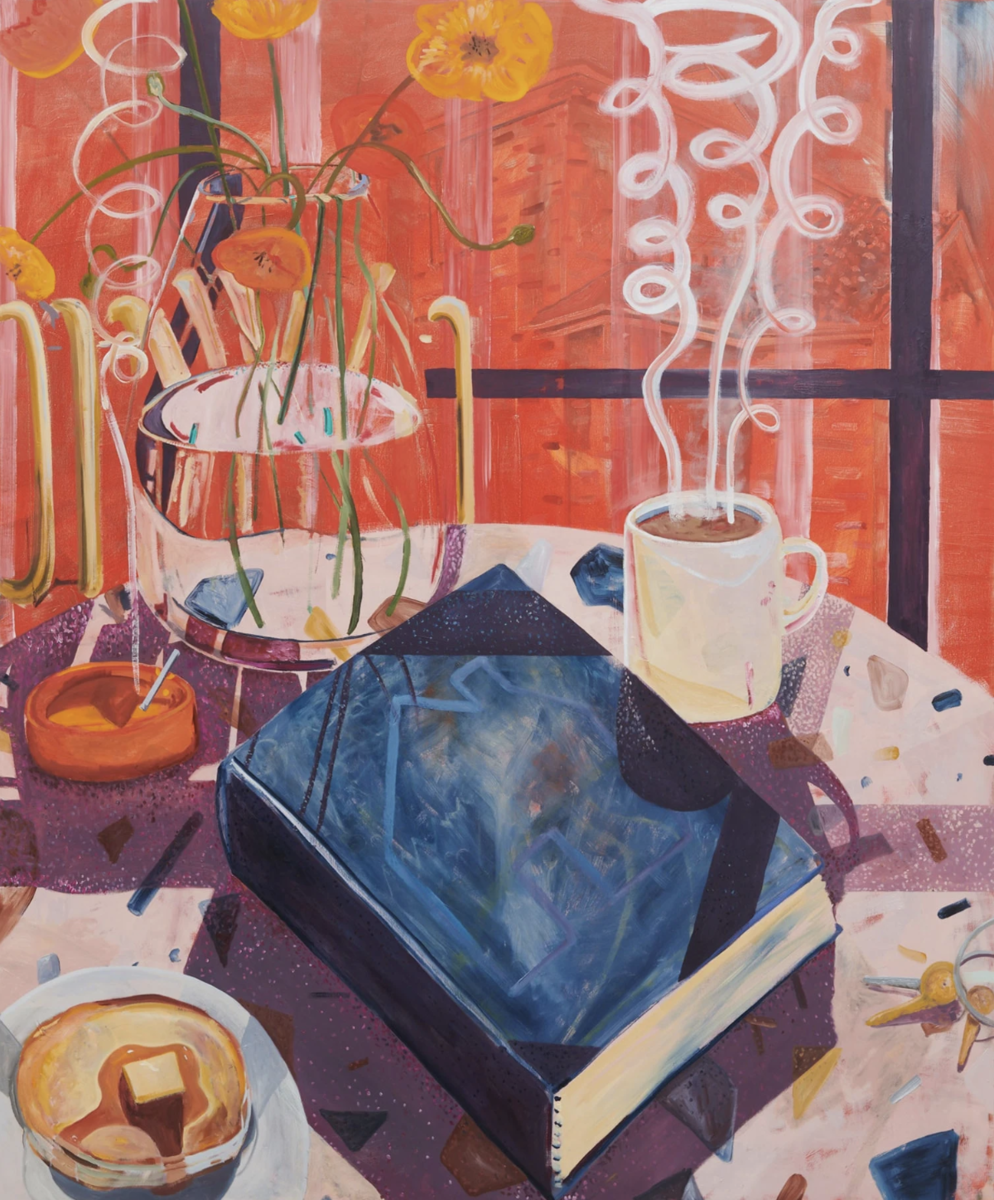
Amber BoardmanSun-Drenched Real Estate Dictionary 2022oil on canvas182.9 x 152.4 cm$13,000.00
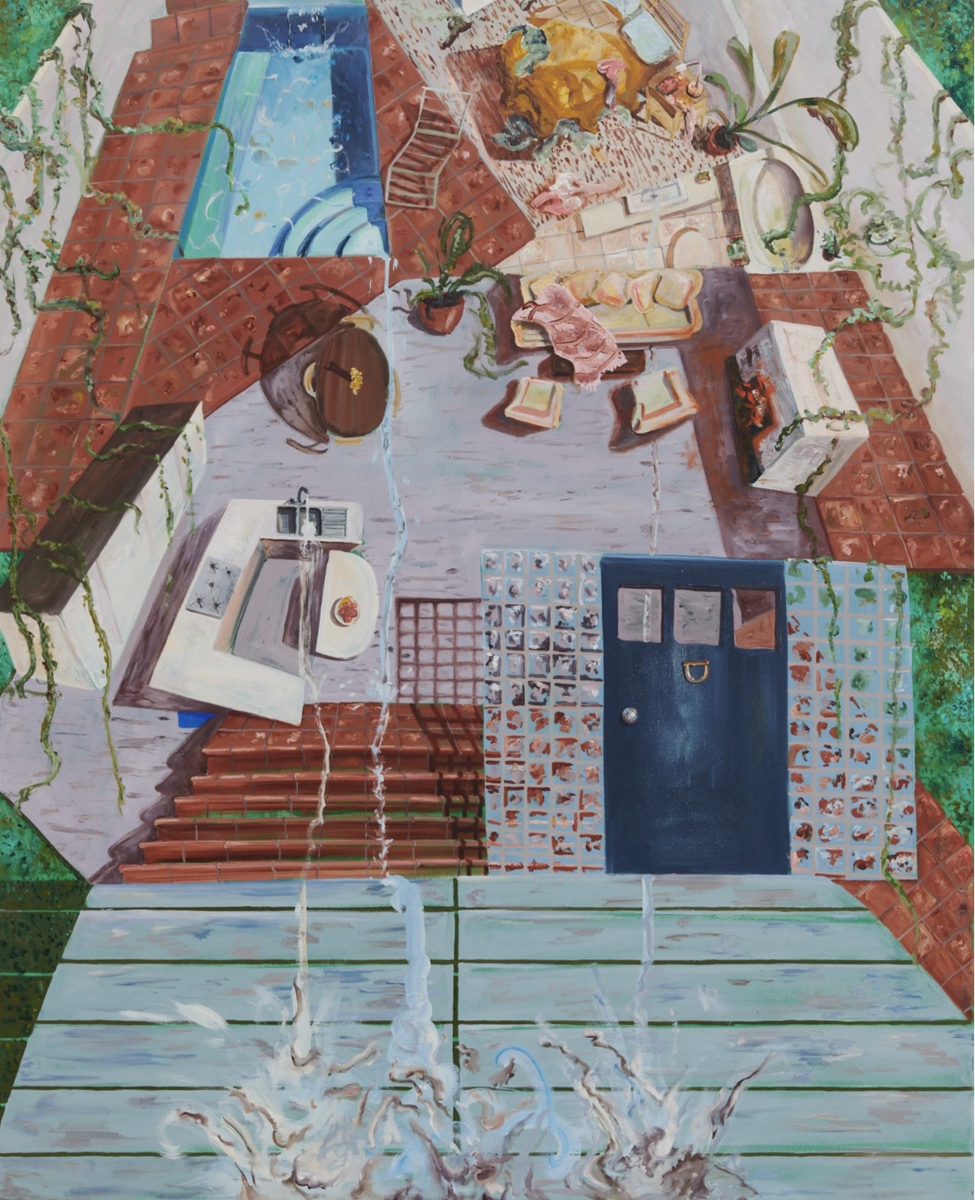
Amber BoardmanKnock Down Rebuild 2022oil on canvas152.4 x 121.9 cm●●
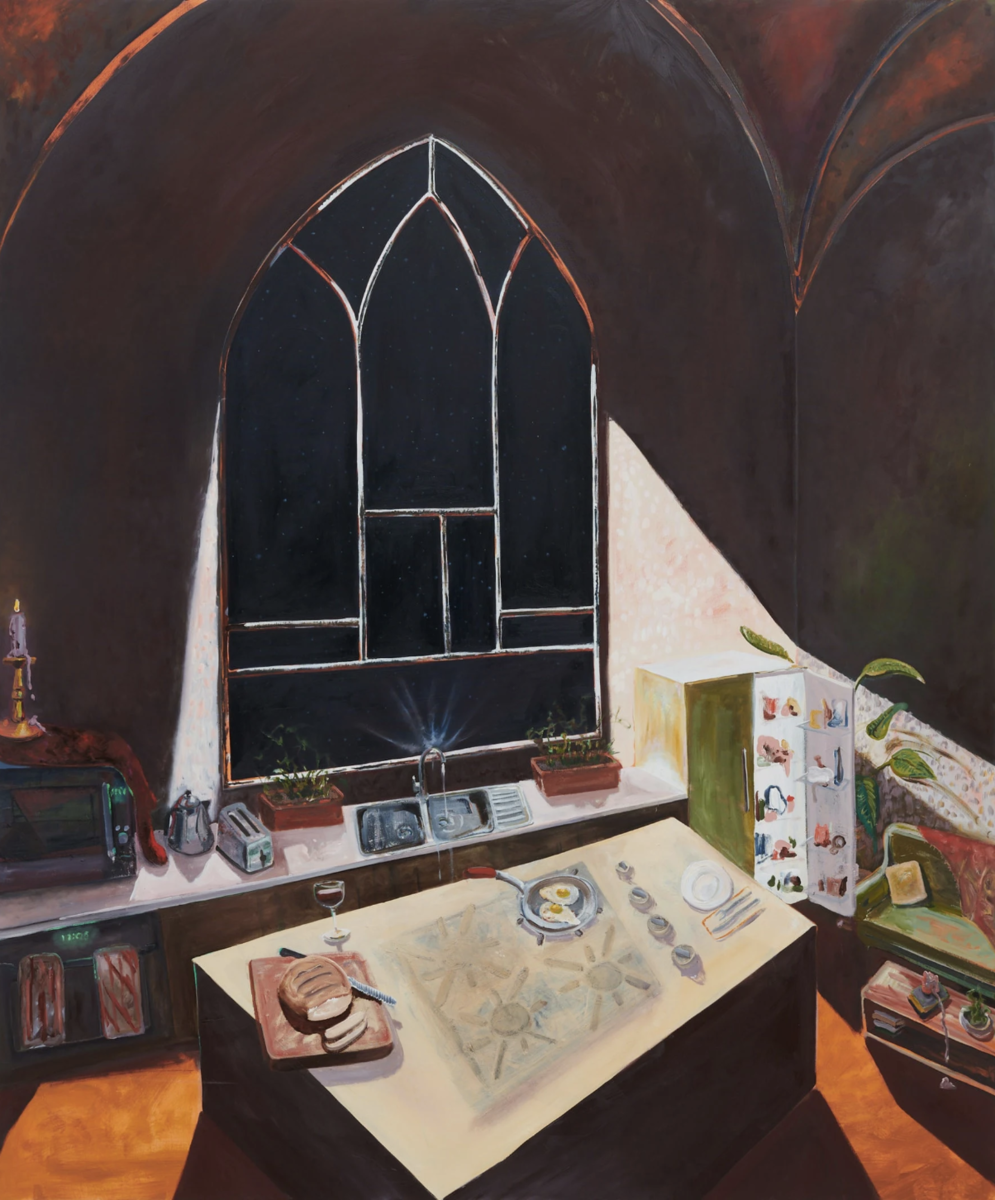
Amber BoardmanReal Estate Religion 2022oil on canvas182.9 x 152.4 cm$13,000.00
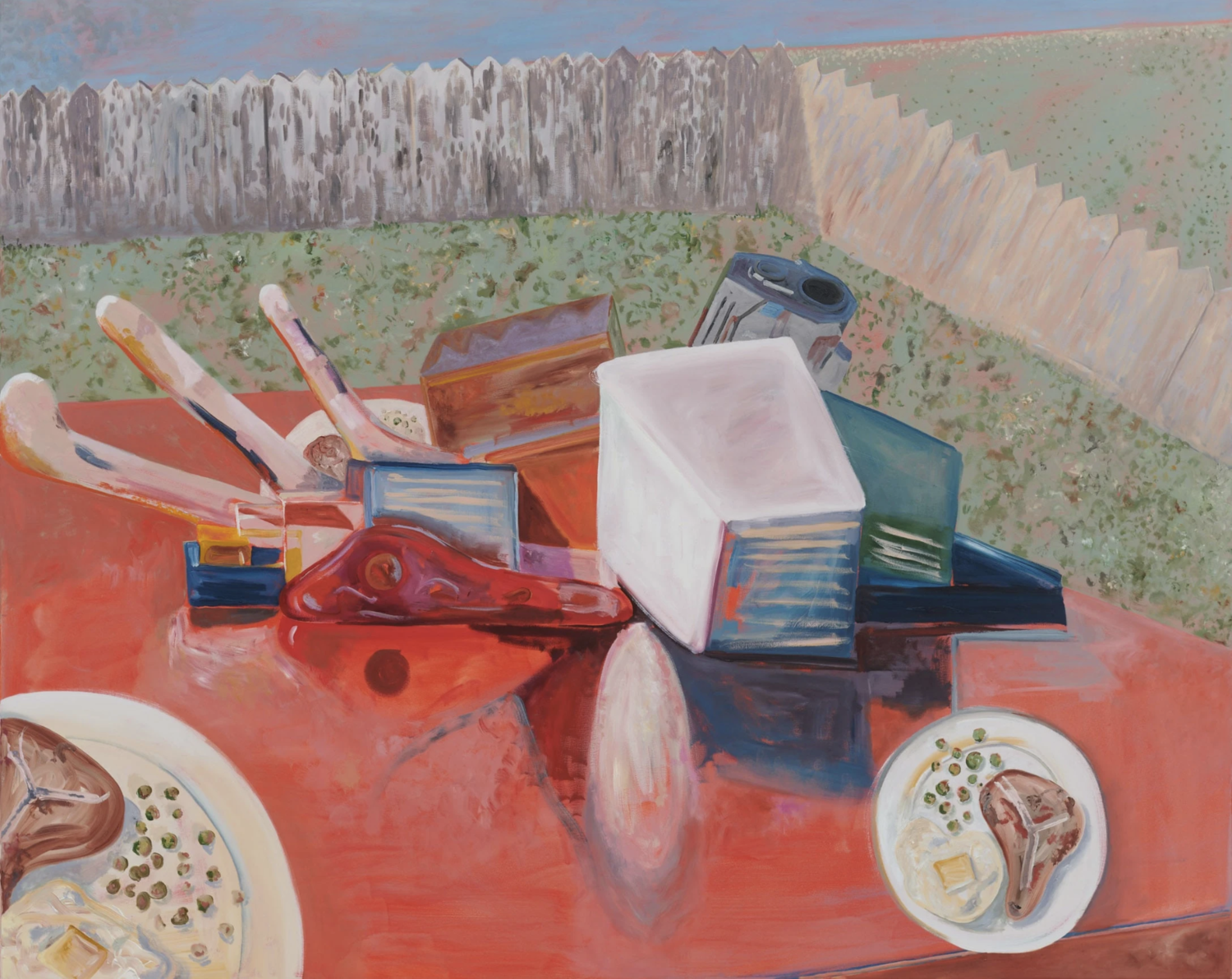
Amber BoardmanIn-Law Dinner Alfresco 2022oil on canvas121.9 x 152.4 cm$10,000.00
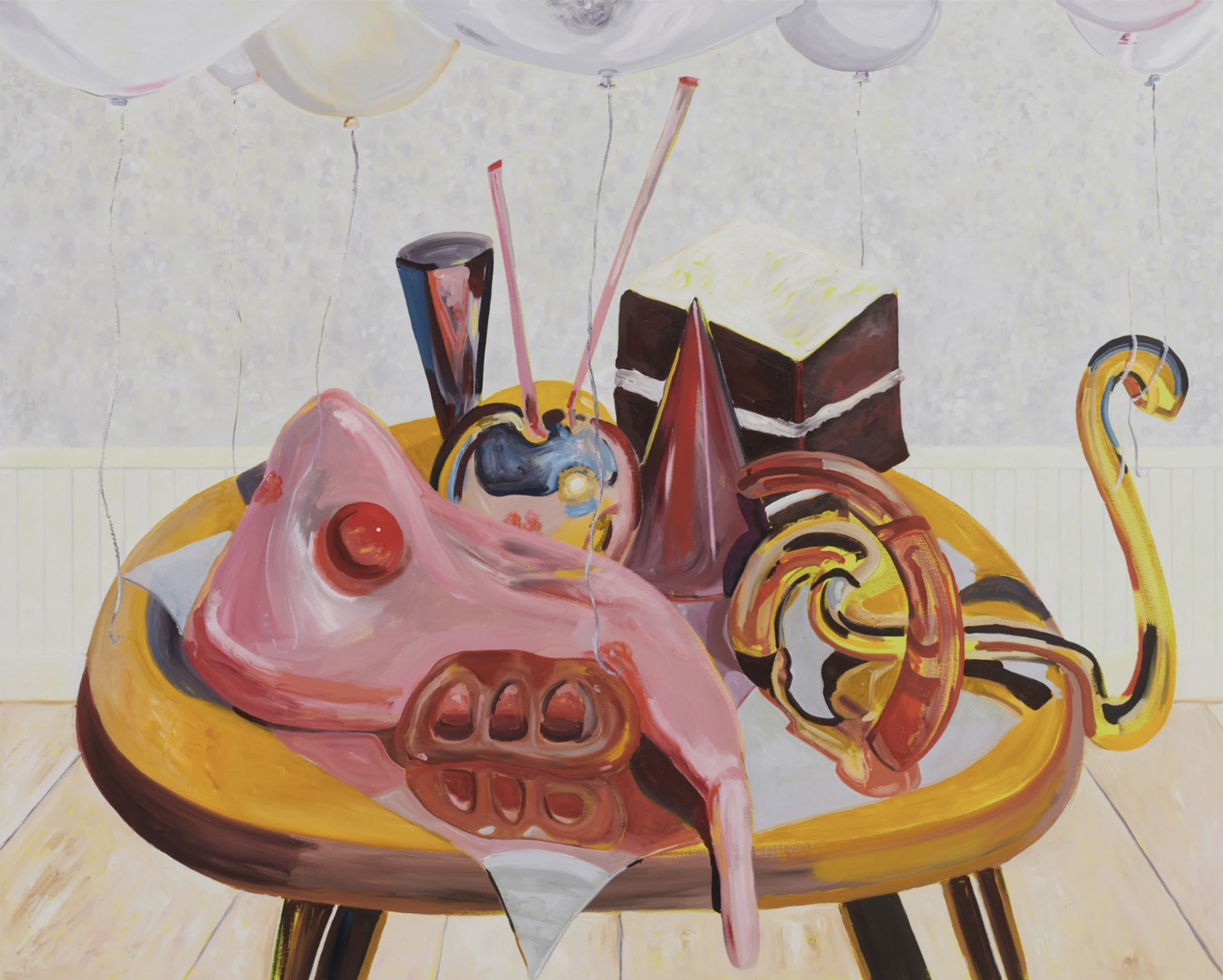
Amber BoardmanGift Table Altar 2022oil on canvas121.9 x 154.4 cm$10,000.00
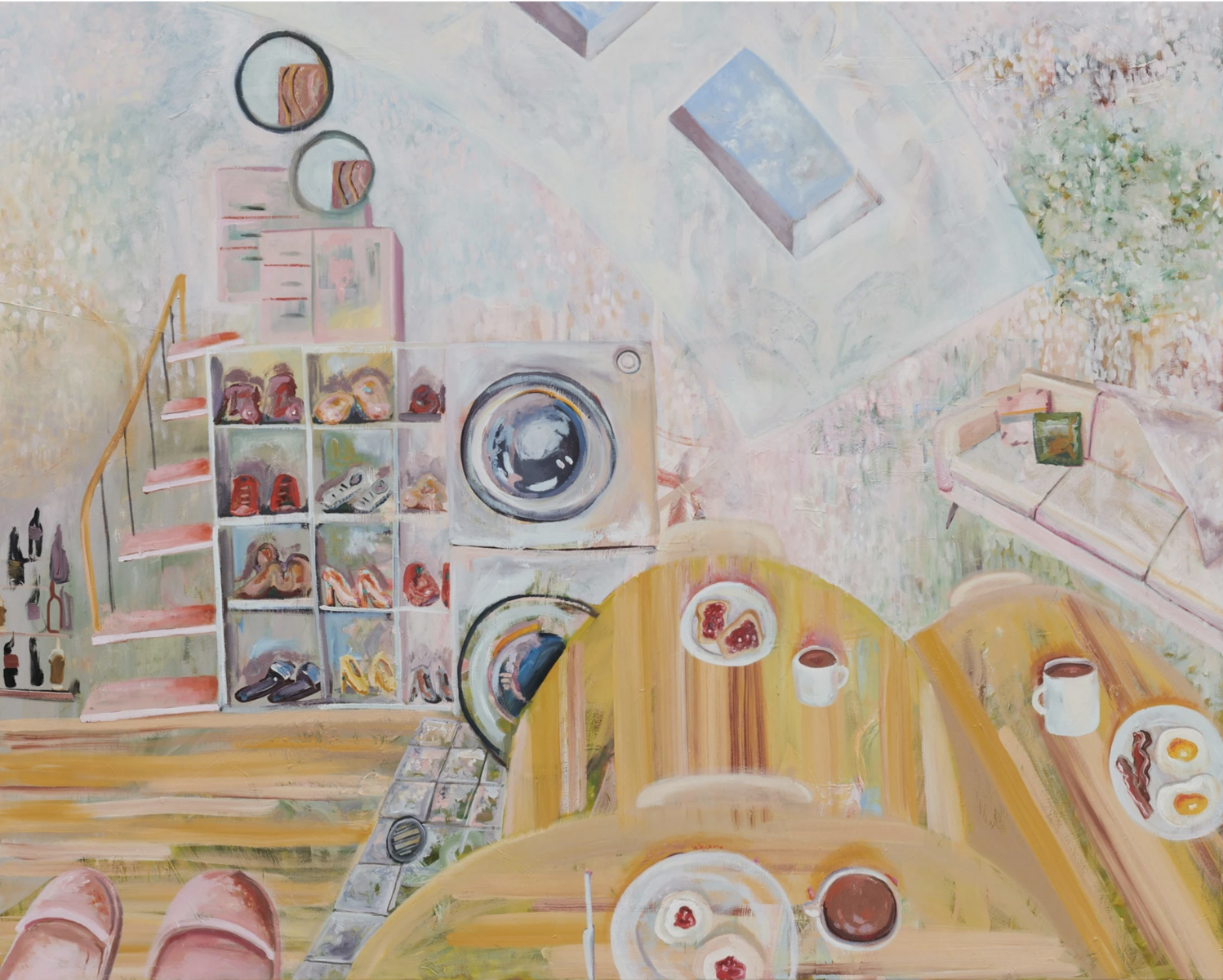
Amber BoardmanApartment Therapy 2022oil on canvas121.9 x 152.4 cm$10,000.00
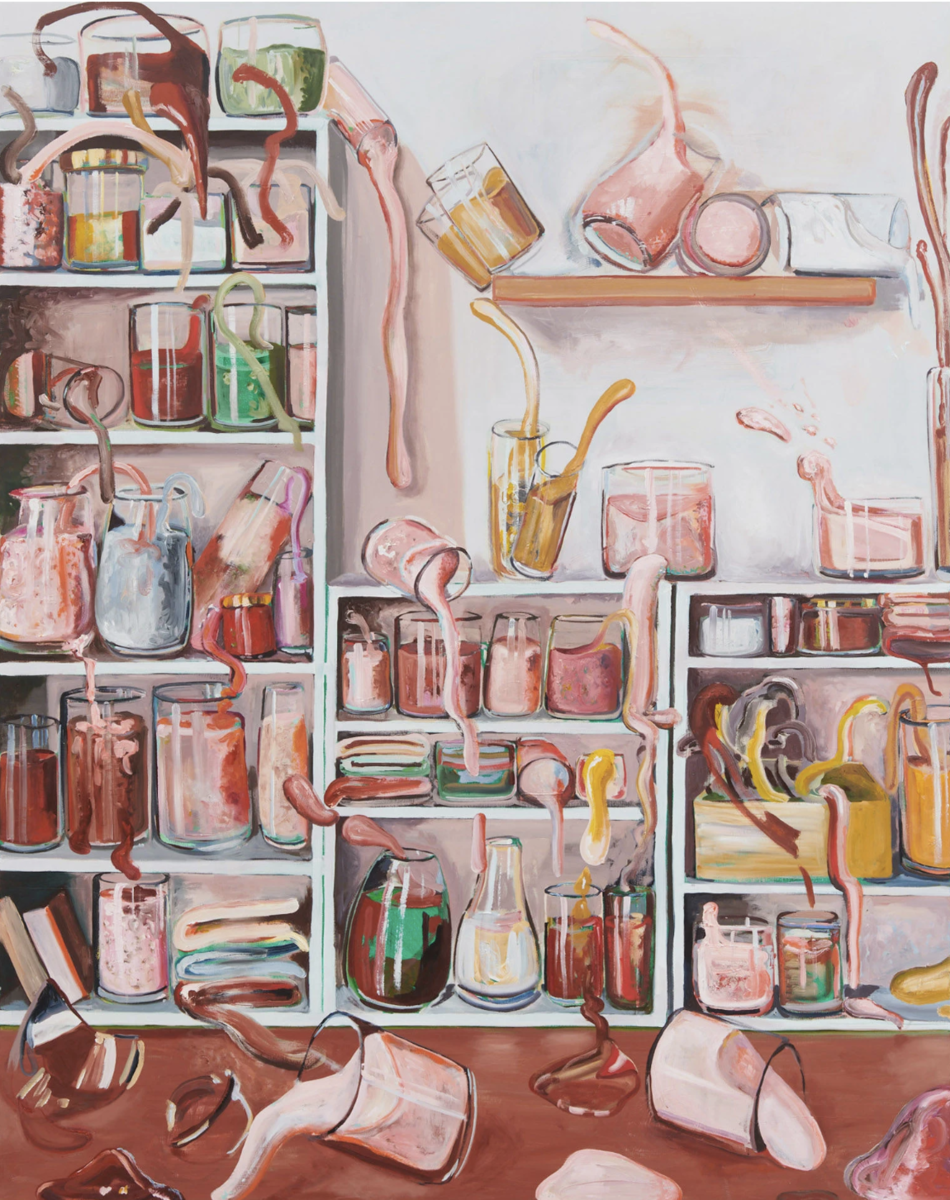
Amber BoardmanReckless Vessels 2022oil on canvas152.4 x 121.9 cm●●
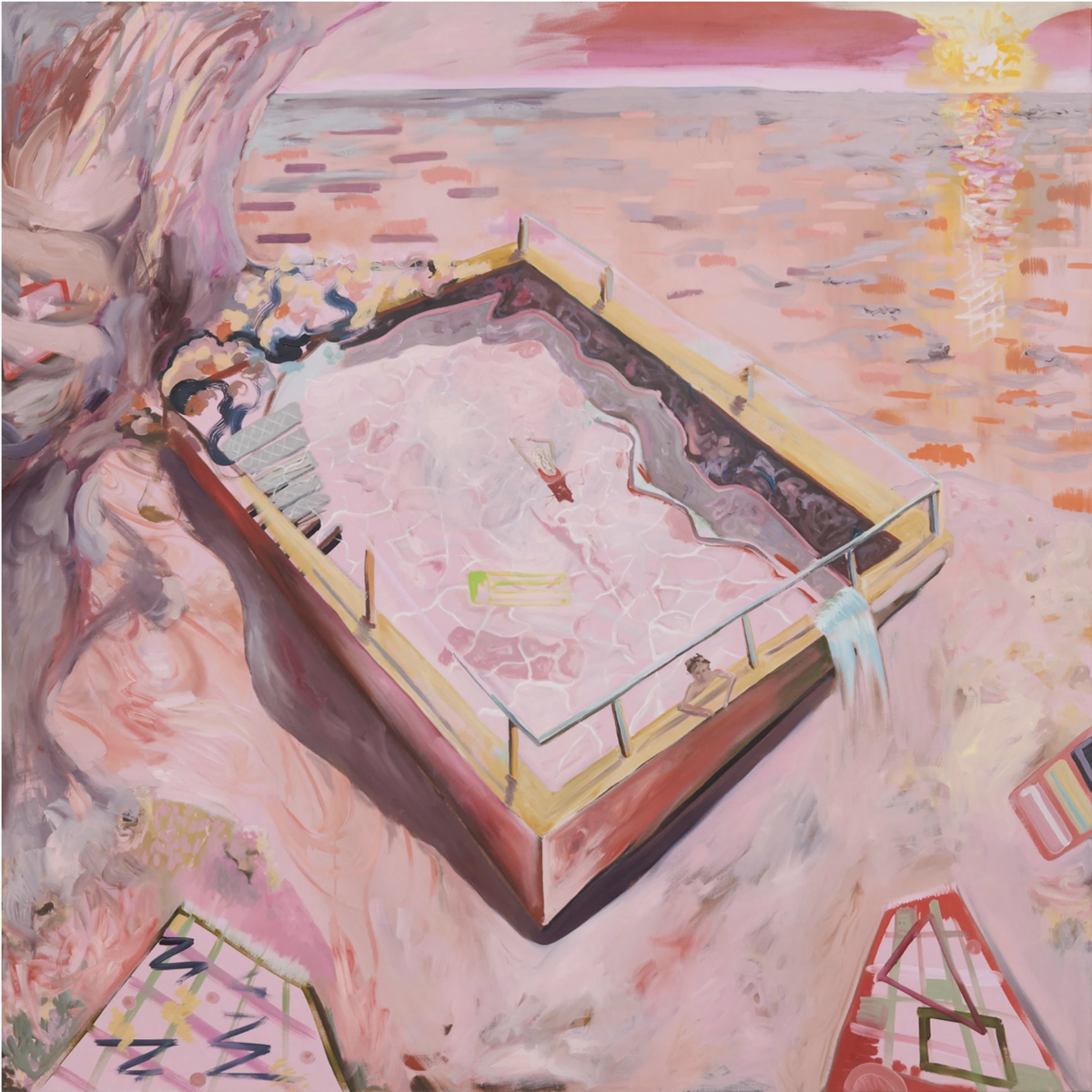
Amber BoardmanMillion Dollar View 2022oil on linen182.9 x 182.9 cm●●
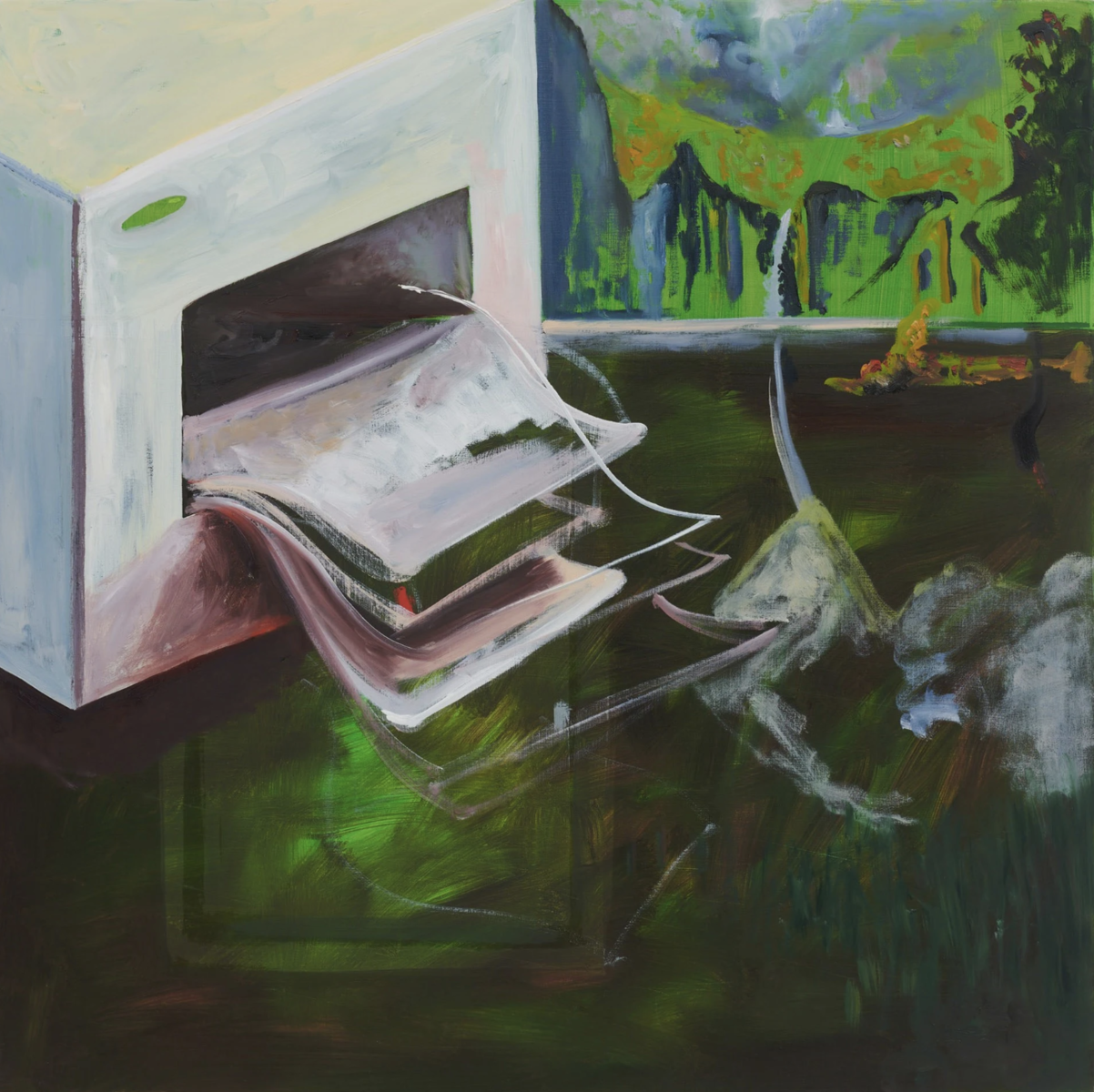
Amber BoardmanGod's Printer 2022oil on panel60 x 60 cm$4,500.00
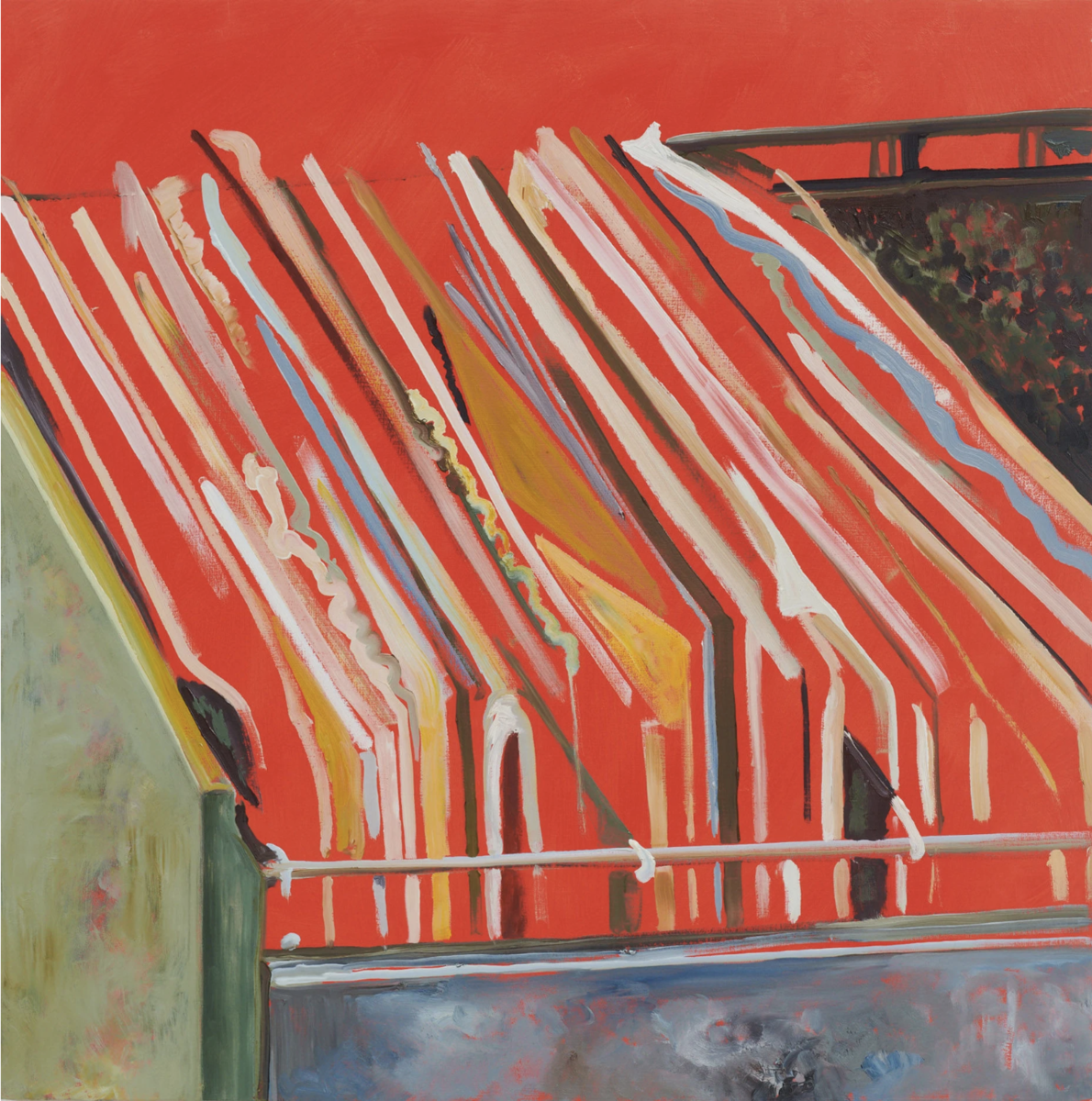
Amber BoardmanFile Cabinet 2022oil on panel60 x 60 cm●●
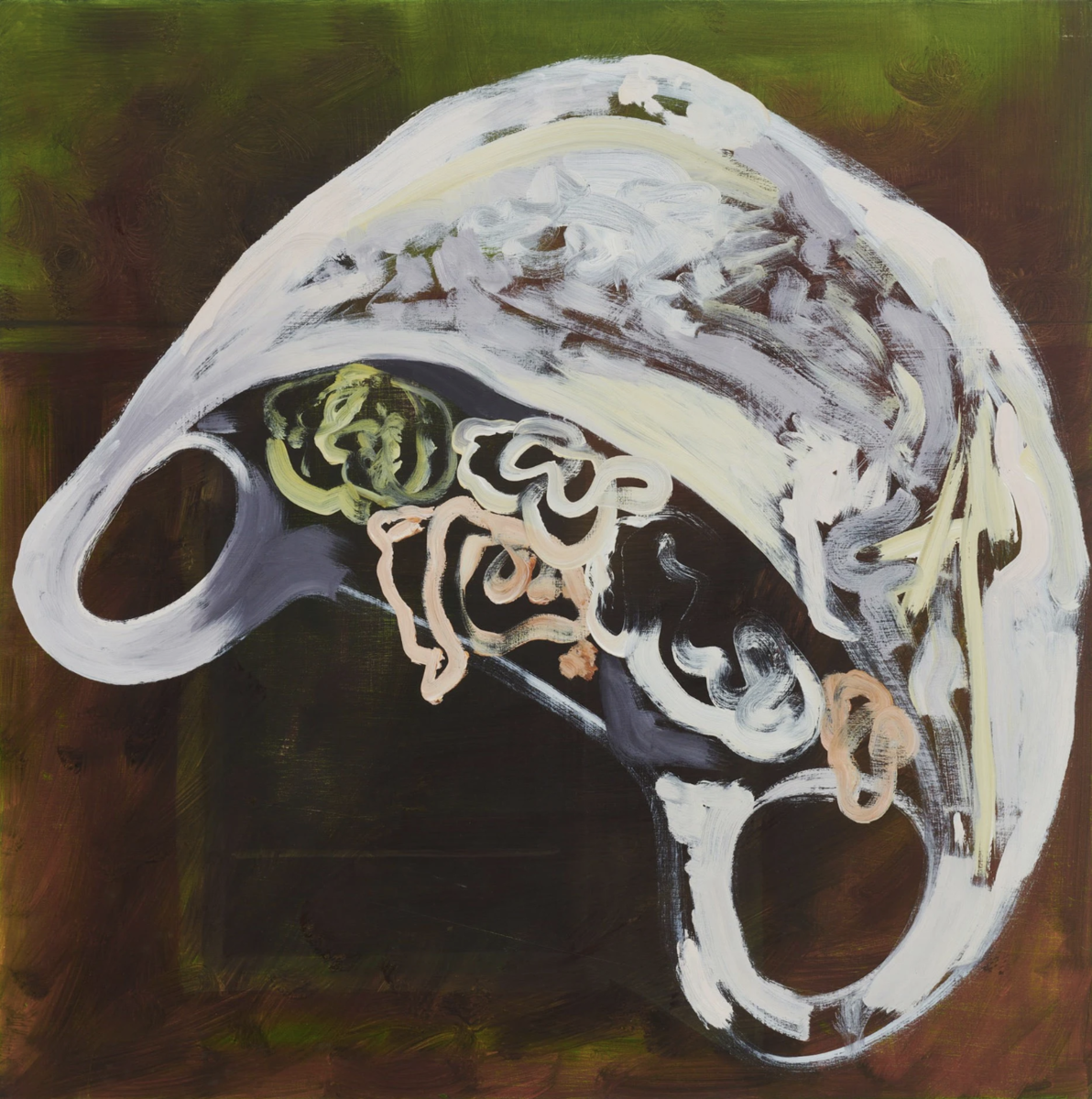
Amber BoardmanBag of Bags 2022oil on panel60 x 60 cm$4,500.00
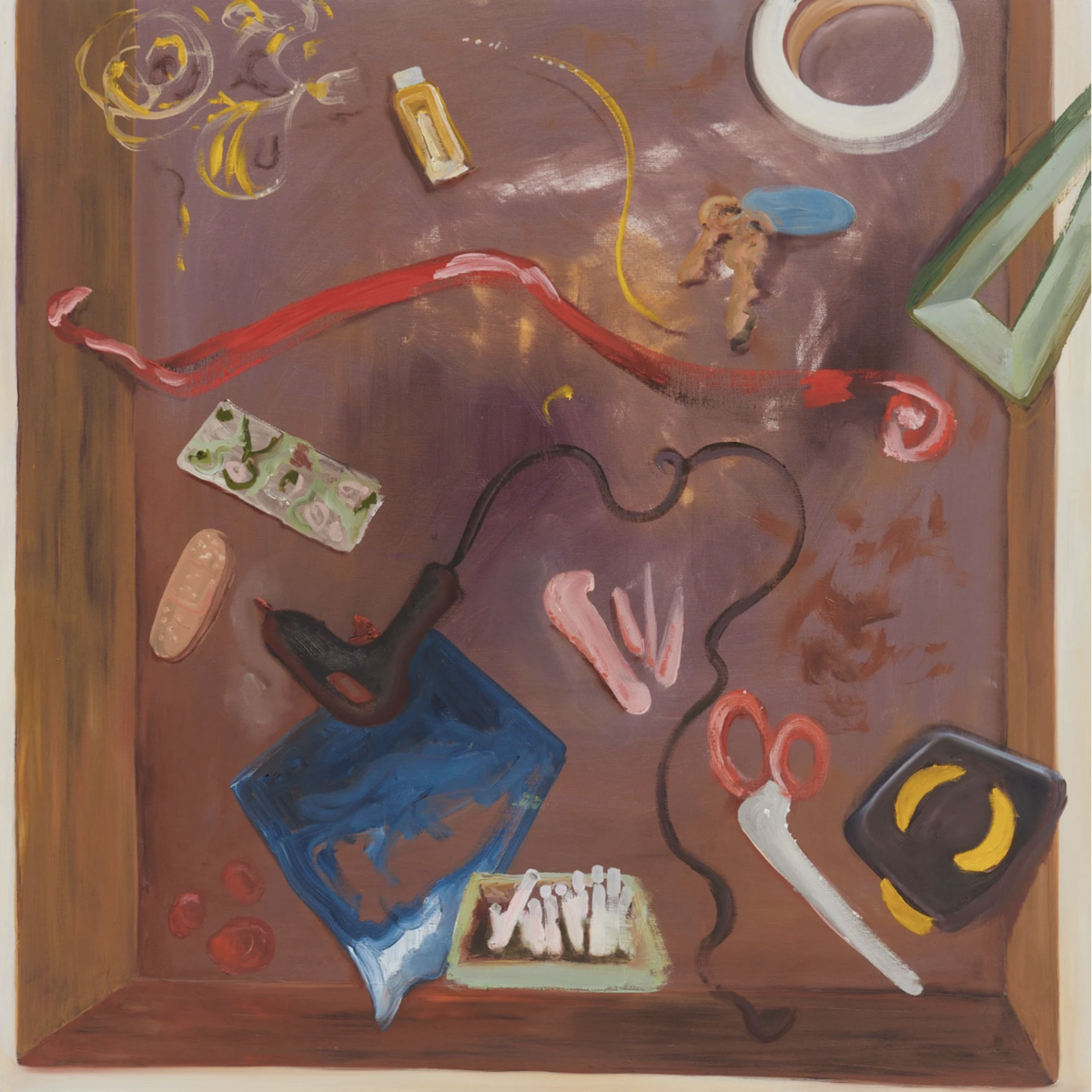
Amber BoardmanJunk Drawer 2022oil on panel60 x 60 cm$4,500.00
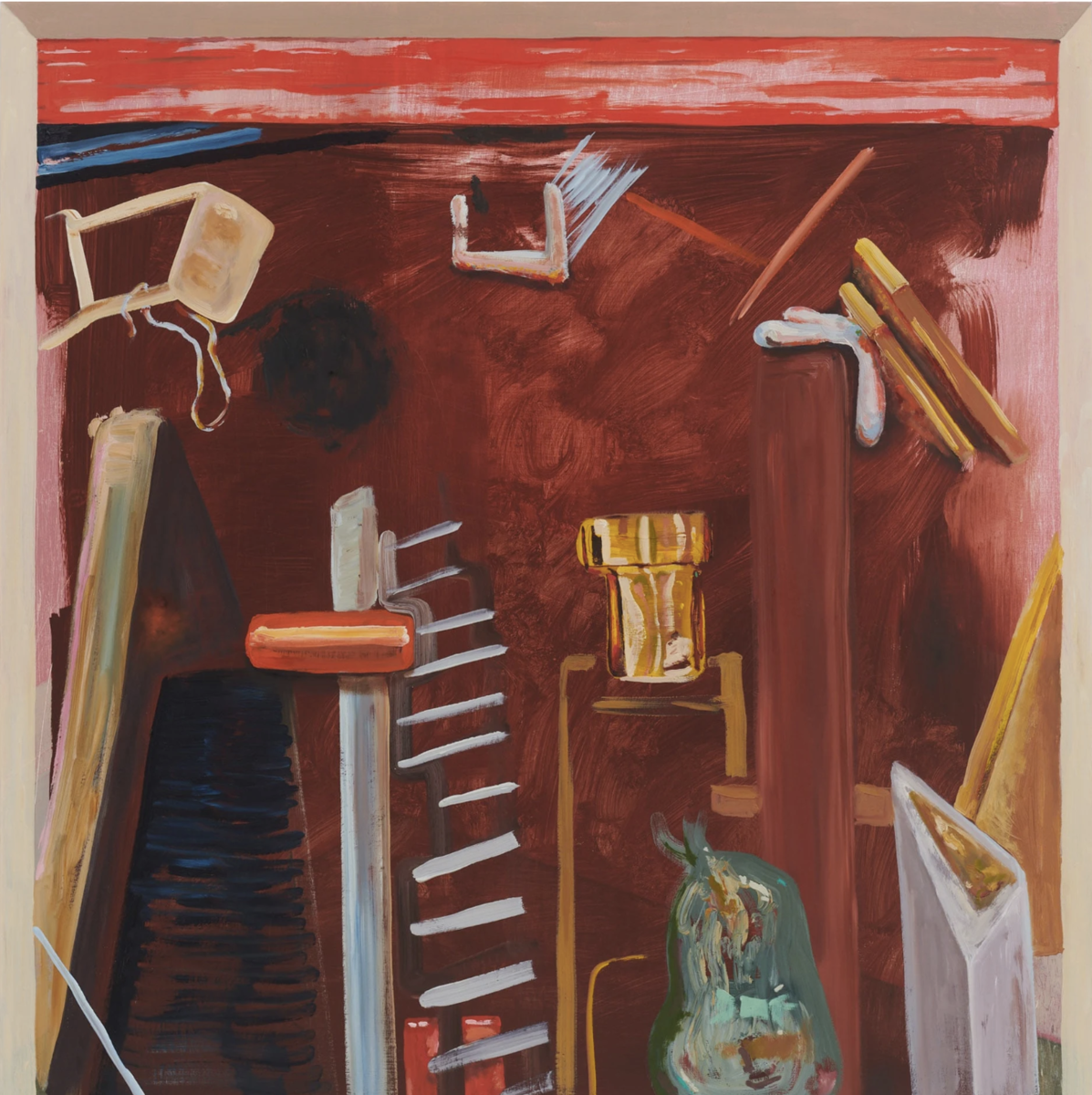
Amber BoardmanStorage Unit 2022oil on panel60 x 60 cm$4,500.00
